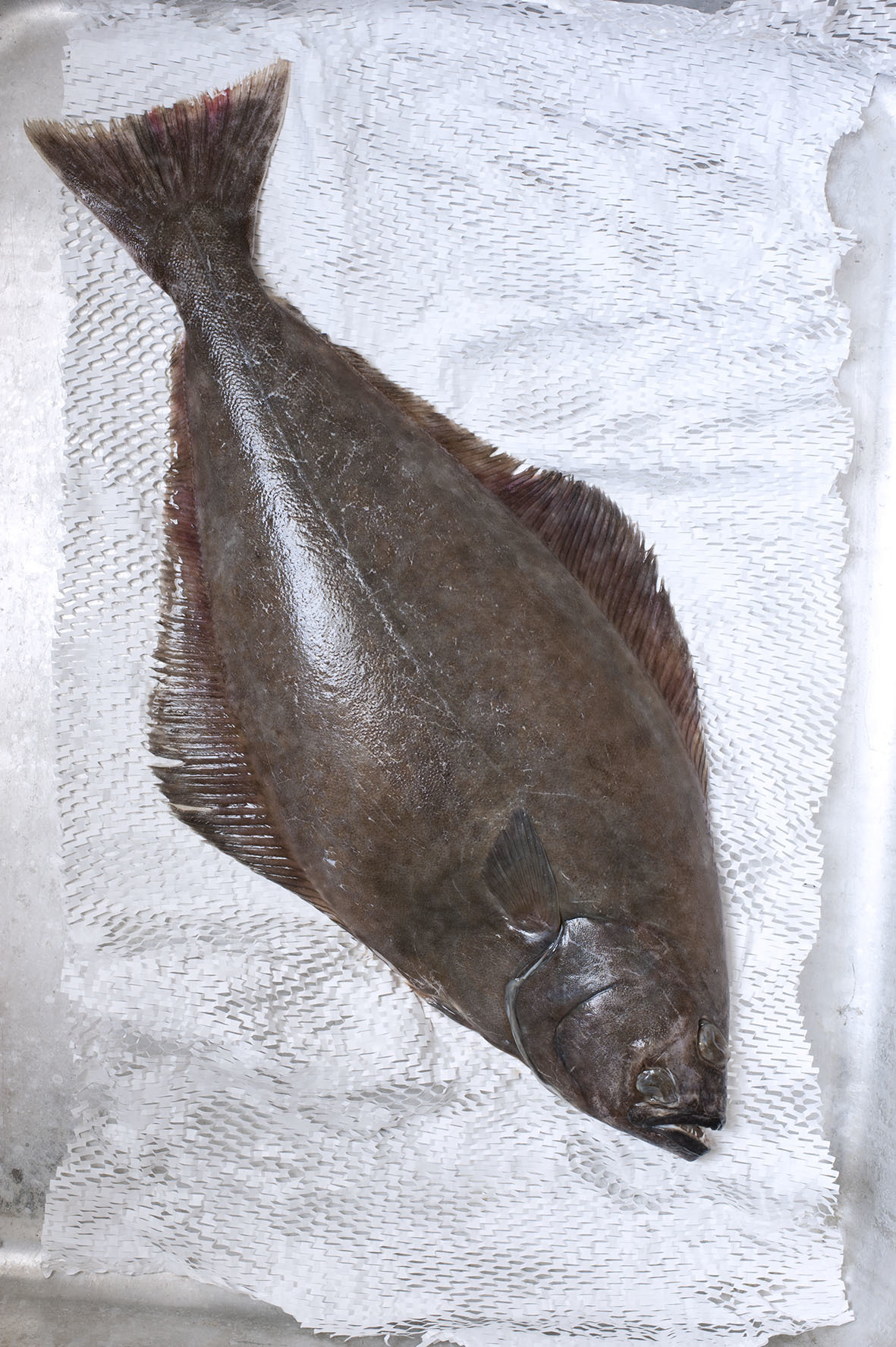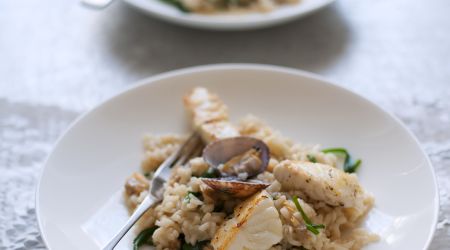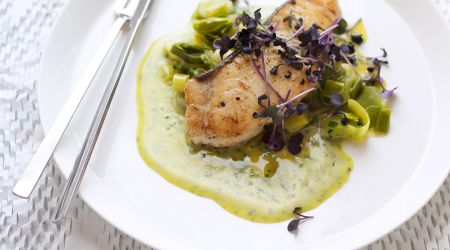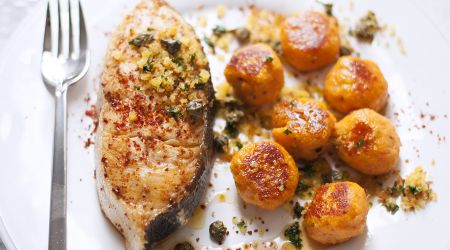Halibut
A giant among flatfish, halibut is high in healthy fish oils, low in fat, and is delicious simply baked, grilled, or poached, in soup, or, as the Swedes like it, in a summery salad with potatoes, hard-boiled eggs and gherkins, says Clarissa Hyman
Halibut ain’t what it used to be. I don’t think I was the only one, but a few years ago I felt that the ‘King of Flatfish’ had somehow lost its lustrous claim to the title. In my (admittedly failing) memory, halibut had always been a prized catch with large, pearly-white flakes that were both meaty and delicate in equal measures: what I was getting in restaurants and at fish counters was good and enjoyable but more akin to lookalike contestants in Stars in Their Eyes. Credible but not altogether convincing.
As labelling became more reliable (and I got better glasses), it turned out that what had passed for Hippoglossus hippoglossus was often Reinhardtius hippoglossoides. In other words, ‘true’ Atlantic halibut versus Greenland halibut respectively. There is some convergence in that both are members of the same family and resemble each other in various aspects such as their diamond-like shape, but when it comes to telling them apart, size really does matter. As does a mild flavour and meaty texture that can convert even the most obdurate of fish-haters. There is another variety, the Pacific halibut, but we will come to that later.
Halibut have been known to reach a monstrous size, up to 2.5 metres in length and tipping the scales at over 300 kilos. Although such giants are pretty rare, their capture can be a tough battle. The fish has strength and determination and will not give in without a darned good fight. In his 1955 autobiography Roving Fisherman, the Canadian author FW Wallace wrote: ‘It will spin around like a whirling top, thereby making the job of giving him his quietus with the “killer” an exceedingly difficult one. For perhaps a minute or two, there is spray and profanity flying, punctuated by dull thuds of the club on the halibut’s snout...’ Wallace said he had even seen men’s wrists broken in such a mêlée.
Atlantic halibut is a handsome fish with a dark, olive-green back and white underside found in very deep, cold water on both sides of the Atlantic, though not usually south of Scotland or below New Jersey. During the winter wild fish are difficult to find, but in the summer they cruise landwards and are said to be particularly fond of eating seabirds’ eggs that fall from clifftop nests. Wild Atlantic halibut is, alas, heavily overfished and currently listed as an endangered species: the situation is particularly bad in the North East Atlantic. In the West Atlantic though, as a result of significant investment in research and management, a Canadian fishery has been certified to Marine Stewardship (MSC) standards. On the other hand, Atlantic halibut is farmed in various countries in both closed tanks and open pens. The Marine Conservation Society (MCS) recommends choosing halibut farmed in closed, shore-based production systems, such as those used in Scotland, which reduce environmental impact. As halibut need other fish for most of their diet, the only assurance the feed comes from a sustainable source is to look for organically farmed fish. The latter is available year-round although there is a limit on the size of the fish.
Halibut needs little more than simple baking but steaks may also be grilled, braised and poached. Cooking with the bones in gives the flesh added succulence, which balances the tendency of larger fish to be a little dry. A popular dish from J Sheekey, the legendary London fish restaurant, is simply gently cooked fillets (no more than 8-9 minutes) served with creamed peas, bacon and spring onions. A well-known Swedish halibut salad is made with poached fish, boiled potatoes, hard-boiled eggs and gherkins. An intriguing but equally famous Icelandic halibut soup includes prunes or rhubarb, egg and lemon juice in the list of ingredients.
A small true halibut is sometimes called a ‘chicken halibut’, but the term ‘little halibut’ generally refers to Greenland halibut, which has a maximum growth length of 80cm, and has a less distinctive taste than the true halibut. Both sides of the fish are equally dark – which accounts for its common names in other languages. In Norway, for example, it is called ‘black’ halibut. It lives in Arctic and sub-Arctic waters and gained its name as a result of its popularity among Greenlanders, who fish it through holes bored in the ice. A popular dish, marinated halibut fins, steeped in a sour-sweet liquid with peppercorns and onion, is served either on bread and butter or at lunchtime with boiled potatoes or potato salad. Smoked Greenland halibut is also delicious.
The MCS describe Greenland halibut as a long-lived, slow-growing species, making it vulnerable to exploitation by commercial fisheries. In the North Arctic (Barents Sea and Norwegian Sea), after reaching a very low point in 2004, the stock is now stable with signs of slow increase. A third and more sustainable choice, however, is the Pacific halibut or Hippoglossus stenolepsis caught wild in the Northeast Pacific in the US and Canadian longline fisheries of Alaska, Washington, Oregon and British Columbia. Stocks are managed by the International Pacific Halibut Commission, which applies strict harvesting conditions. The flesh is dense, firm and low in fat, and has a milder taste than its Atlantic cousin.
It is thought the word ‘halibut’ derives from ‘haly’ (holy) and ‘butte’ (flat fish) as a result of its former popularity on Catholic holy days in England. Holy day. Holy fish. Halibut. Give it a try; just for the halibut.

Recipes
Get Premium access to all the latest content online
Subscribe and view full print editions online... Subscribe




